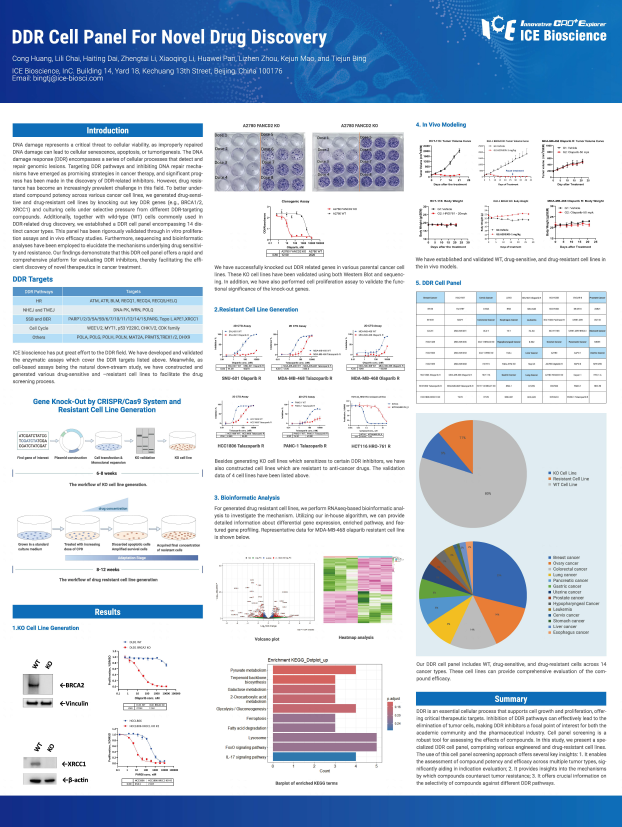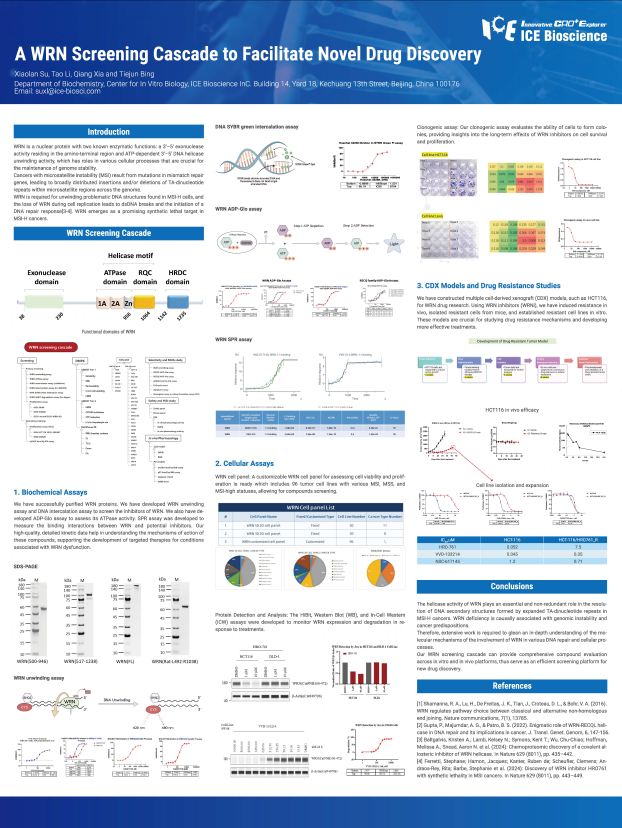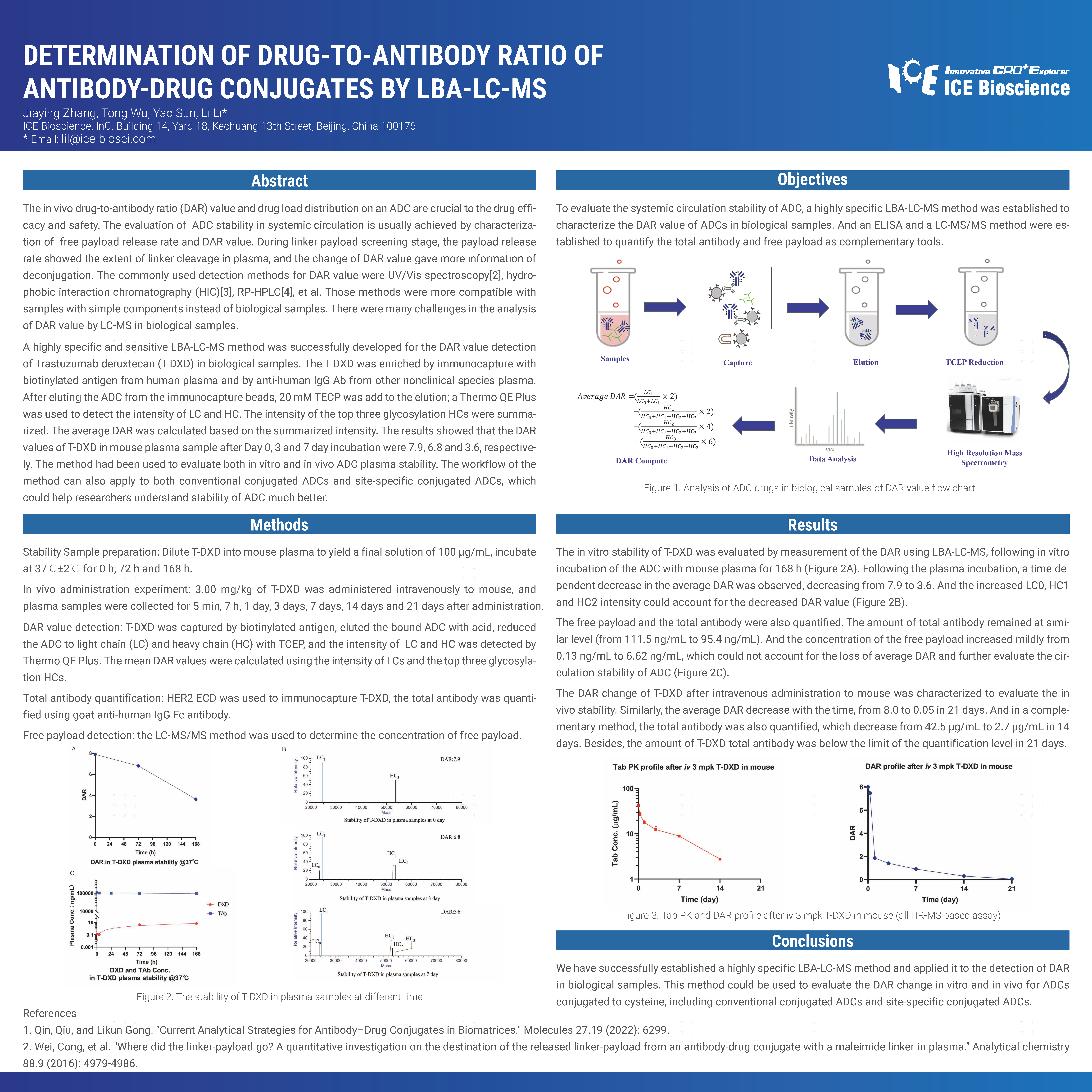
DNA damage represents a critical threat to cellular viability, as improperly repaired DNA damage can lead to cellular senescence, apoptosis, or tumorigenesis. The DNA damage response (DDR) encompasses a series of cellular processes that detect and repair genomic lesions. Targeting DDR pathways and inhibiting DNA repair mechanisms have emerged as promising strategies in cancer therapy, and significant progress has been made in the discovery of DDR-related inhibitors. However ,drug resistance has become an increasingly prevalent challenge in this field. To better understand compound potency across various cancer cell lines, we generated drug-sensitive and drug-resistant cell lines by knocking out key DDR genes (e.g., BRCA1/2, XRCC1) and culturing cells under selective pressure from different DDR-targeting compounds. Additionally, together with wild-type (WT) cells commonly used in DDR-related drug discovery, we established a DDR cell panel encompassing 14 distinct cancer types. This panel has been rigorously validated through in vitro proliferation assays and in vivo efficacy studies. Further more, sequencing and bioinformatic analyses have been employed to elucidate the mechanisms underlying drug sensitivity and resistance. Our findings demonstrate that this DDR cell panel offers a rapid and comprehensive platform for evaluating DDR inhibitors, thereby facilitating the efficient discovery of novel therapeutics in cancer treatment.

In the past 50 years, obesity has become an international public health issue that affects the quality of life, increases the risk of illness, and raises health-care costs in countries in all parts of the world. Anti-obesity drugs will be the most impactful trend of 2024, followed by personalized and precision medicine, immuno-oncology drug development, real-world evidence and cell and gene therapies. Research all over the world has been carried about around multiple anti-obesity targets on different mechanism like genetic, epigenetic, physiological, behavioural, sociocultural, and environmental factors.
Here we briefly introduced our Biology Building Blocks platform which including the target, assay and technology for Cannabinoid Receptor 1 (CB1), the Apelin receptor (APJ) and G Protein-Coupled Receptor 75 (GPR75), which are all related to anti-obesity pathway with different mechanisms. This study described the recombinant protein purification, cell line generation, functional assay development and application. Meanwhile, several CDX modes are constructed for promisingly conducting in-vivo experiments and biomarker detection. Combine with small molecules library, Al/ML and MedChem collaboration, our Bioscience platform may accelerate drug discovery process.

WRN is a nuclear protein with two known enzymatic functions: a 3'-5' exonuclease activity residing in the amino-terminal region and ATP-dependent 3'-5' DNA helicase unwinding activity, which has roles in various cellular processes that are crucial for the maintenance of genome stability.
Cancers with microsatellite instability (MSI) result from mutations in mismatch repair genes, leading to broadly distributed insertions and/or deletions of TA-dinucleotide repeats within microsatellite regions across the genome.
WRN is required for unwinding problematic DNA structures found in MSI-H cells, and the loss of WRN during cell replication leads to dsDNA breaks and the initiation of a DNA repair response. WRN emerges as a promising synthetic lethal target in MSI-H cancers.

The in vivo drug-to-antibody ratio (DAR) value and drug load distribution on an ADC are crucial to the drug efficacy and safety. The evaluation of ADC stability in systemic circulation is usually achieved by characterization of free payload release rate and DAR value. During linker payload screening stage, the payload release rate showed the extent of linker cleavage in plasma, and the change of DAR value gave more information of deconjugation. The commonly used detection methods for DAR value were UV/Vis spectroscopy[2], hydrophobic interaction chromatography (HIC)[3], RP-HPLC[4], et al. Those methods were more compatible with samples with simple components instead of biological samples. There were many challenges in the analysis of DAR value by LC-MS in biological samples.
A highly specific and sensitive LBA-LC-MS method was successfully developed for the DAR value detection of Trastuzumab deruxtecan (T-DXD) in biological samples. The T-DXD was enriched by immunocapture with biotinylated antigen from human plasma and by anti-human IgG Ab from other nonclinical species plasma. After eluting the ADC from the immunocapture beads, 20 mM TECP was add to the elution; a Thermo QE Plus was used to detect the intensity of LC and HC. The intensity of the top three glycosylation HCs were summarized. The average DAR was calculated based on the summarized intensity. The results showed that the DAR values of T-DXD in mouse plasma sample after Day 0, 3 and 7 day incubation were 7.9, 6.8 and 3.6, respectively. The method had been used to evaluate both in vitro and in vivo ADC plasma stability. The workflow of the method can also apply to both conventional conjugated ADCs and site-specific conjugated ADCs, which could help researchers understand stability of ADC much better.